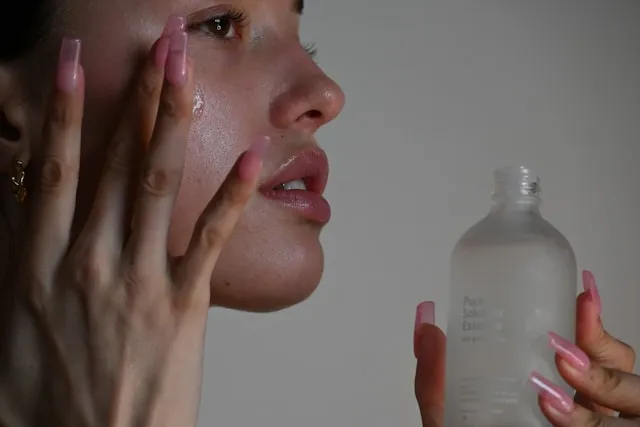Everyone wants healthy, glowing skin that feels fresh and looks even-toned. However, factors like sun exposure, acne marks, hormonal changes, and aging can lead to uneven pigmentation or dullness. Instead of trying harsh products that promise “instant fairness,” dermatologists recommend using proven ingredients that safely support brightness and balance your natural complexion.
In this article, we’ll explore 10 dermatologist-approved ingredients for brighter skin, supported by science, gentle on most skin types, and effective when used consistently.
10 Science-Backed Best Ingredients for Brighter Skin
1. Vitamin C
Vitamin C is one of the most researched ingredients for skin health. It brightens skin by inhibiting excess melanin production, the pigment responsible for dark spots, and also supports collagen formation for a smoother texture.
Research shows that topical Vitamin C improves uneven tone and skin firmness.
Other benefits:
-
Protects skin from UV damage and pollution
-
Reduces fine lines and dullness
2. Niacinamide (Vitamin B3)
Niacinamide helps reduce dark spots by slowing pigment transfer to skin cells. It also strengthens the skin barrier, which improves moisture retention and texture.
A 2002 study in the British Journal of Dermatology reported that 5% niacinamide reduced hyperpigmentation and improved brightness in just four weeks.
Other benefits:
-
Reduces redness and blotchiness
-
Minimizes fine lines and dullness
3. Azelaic Acid
Naturally found in grains, azelaic acid reduces uneven pigmentation and clears pores. It’s often prescribed by dermatologists for acne and melasma (patchy discoloration).
Research shows that Azelaic acid can improve melasma and rosacea safely.
Other benefits:
-
Gently exfoliates dead skin
-
Calms redness and irritation
4. Arbutin
Derived from bearberry plants, arbutin works by inhibiting tyrosinase, the enzyme that triggers melanin production. It helps fade dark spots and uneven patches over time.
Other benefits:
-
Provides antioxidant protection
-
Safe alternative to harsh lightening agents
Evidence: Research published in Phytotherapy Research (2015) confirms arbutin’s role in reducing hyperpigmentation without irritation.
5. Kojic Acid (Use Under Guidance)
Kojic acid, derived from fungi, can help reduce pigmentation from sun damage or acne scars. However, dermatologists advise using it in low concentrations (1%–2%) to prevent irritation.
Topical kojic acid has shown efficacy in fading melasma and dark spots when used appropriately.
Other benefits:
-
Provides mild antioxidant protection
-
Promotes a more uniform tone
6. Lactic Acid
Lactic acid, a type of alpha-hydroxy acid (AHA), gently exfoliates dead skin cells. This improves skin brightness and allows better absorption of other products.
Other benefits:
-
Increases hydration levels
-
Smoothens rough or textured skin
The AAD recommends lactic acid for dry or dull skin due to its dual exfoliating and moisturizing properties.
7. Glycolic Acid
As the smallest AHA molecule, glycolic acid penetrates deeply to remove dead cells and stimulate collagen production. It helps fade mild pigmentation from sun exposure.
Research confirms glycolic acid’s role in smoothing skin and supporting a brighter tone.
Other benefits:
-
Improves tone and luminosity
-
Boosts firmness over time
8. Licorice Root Extract
Licorice extract contains glabridin, which helps block melanin production triggered by UV exposure. It also soothes inflammation and irritation.
Studies show glabridin can inhibit tyrosinase activity, leading to visibly brighter skin over consistent use.
Other benefits:
-
Reduces redness
-
Offers antioxidant protection
9. Green Tea Extract
Rich in polyphenols, green tea extract combats oxidative stress—one of the main reasons for dull and tired-looking skin.
According to research, antioxidants like green tea help protect skin from environmental stressors that lead to uneven tone.
Other benefits:
-
Protects against UV-induced pigmentation
-
Calms redness and irritation
10. Aloe Vera
Aloe vera hydrates and repairs damaged skin cells. It can help fade mild dark spots and support natural healing after sun exposure.
Research shows aloe vera’s role in restoring moisture and supporting healthy skin turnover.
Other benefits:
-
Soothes irritation
-
Improves elasticity and glow
Dermatologist Tips for Safe and Effective Results
-
Be consistent, not aggressive: Overuse of active ingredients can cause irritation or sensitivity.
-
Always wear sunscreen (SPF 30+): Sun exposure reverses brightening progress and triggers pigmentation.
-
Do a patch test first: Sensitive skin may react differently to certain actives.
-
Avoid “instant whitening” claims: Quick results often come from unsafe formulations or unapproved ingredients.
-
Consult a certified dermatologist: For conditions like melasma or stubborn hyperpigmentation, medical-grade treatments may be required.
Summing Up
Achieving brighter, more even-toned skin isn’t about changing your natural complexion—it’s about nurturing your skin barrier, protecting it from damage, and using science-backed ingredients consistently.
Dermatologist-approved actives like Vitamin C, Niacinamide, Azelaic Acid, Arbutin, and Lactic Acid are proven to support a radiant glow safely.
Healthy, glowing skin takes patience, not promises, and your dermatologist is the best guide to choosing what’s right for your skin type.
Disclaimer: This article is for informational purposes only and does not replace professional medical advice. Always consult a certified dermatologist before starting any new skincare product or treatment.
Reviewed by







